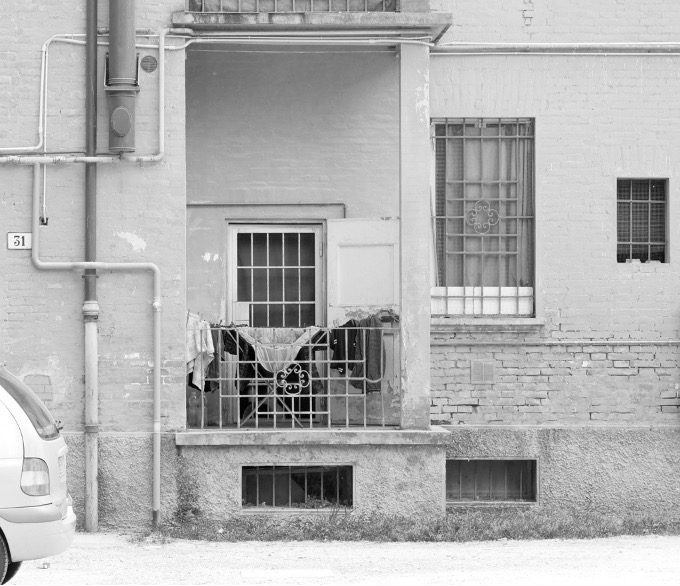Art-based methodology and social research: making the frontiers of the visible porous
DOI:
https://doi.org/10.13133/2532-6562/18002Keywords:
inequality, visual research, reflexivityAbstract
This paper explores the links between social inequalities and the spatial dimensions in which they are reiterated. The visual research that we present has created new ways of reflecting for those involved in social work. What can social workers see and what remains invisible when observing the context of their work, and what impact can photography have upon this relationship? The research demonstrates how the experience of observing through visual means has helped social workers reframe and question the categories they assume in a more reflexive way. The collective exploration of social spaces, accompanied by an artist, has proven to be a valuable tool in rendering porous not only the methodological frontiers between social work, research and artistic practices, but also the positioning and categorisation that instruct these different fields of knowledge.
References
Bukowski W. (2019). La buona educazione degli oppressi: piccola storia del decoro. Roma: edizioni Alegre.
Burnham P. (2001). «New Labour and the politics of depoliticisation». The British Journal of Politics & International Relations, 3(2): 127-149.
https://doi.org/10.1111/1467- 856X.00054.
Busso S., Gargiulo E. (2017). «Una “Società armoniosa”? Il posto del conflitto nelle pratiche e nel discorso sul Terzo Settore». Cartografie Sociali, 3: 137-54.
Gauntlett D. (2007). Creative explorations: new approaches to identities and audiences. London: Routledge.
Kemmis S., McTaggart R. (2005). «Participatory Action Research: Communicative Action and the Public Sphere». In: N.K. Denzin, Y.S. Lincoln, eds., The Sage Handbook of Qualitative Research (third edition). Thousand Oaks: Sage.
McNiff S. (2008). «3 art-based research». In: J. G. Knowles, A. L. Cole, eds., Handbook of the arts in qualitative research: Perspectives, methodologies, examples, and issues. London: Sage Publications.
Meade R. (2021). «Territorial stigmatization in theory and practice, and its implications for community development: an introduction to the themed section». Community Development Journal, 56 (2): 191-202. https://doi.org/10.1093/cdj/bsab002.
Mozzana C. (2019). Welfare, capacità e conoscenza: le basi informative dell’azione pubblica. Roma: Carocci editore.
Park P. (2001). «Knowledge and Participatory Research». In: Reason P., Bradbury H., eds., Handbook of Action Research: Participative Inquiry and Practice. London: Sage Publications.
Sheller M. (2015). «Vital methodologies: Live methods, mobile art, and research-creation». In: Vannini P., ed., Non-representational methodologies. London: Routledge.
Supiot A. (2015). La gouvernance par les nombres. Cours au Collège de France (2012-2014). Paris: Fayard.
Timmermans S., Epstein S. (2010). «A world of standards but not a standard world: Toward a sociology of standards and standardization». Annual review of Sociology, 36: 9-89. https:// doi.org/10.1146/annurev.soc.012809.102629.
Wacquant L. (2008). Urban outcasts: a comparative sociology of advanced marginality. Cambridge: Polity.
Wacquant L. (2014). «Marginality, Ethnicity and Penality in the neo-Liberal City: An Analytic Cartography». Ethnic & Racial Studies, 37 (10): 1678-1711. https://doi.org/10.1080/01419870.2 014.931991.

Downloads
Published
How to Cite
Issue
Section
License
Copyright (c) 2022 Daniela Leonardi, Vincenza Pellegrino

This work is licensed under a Creative Commons Attribution 4.0 International License.
NOTA DI COPYRIGHT
Proposta di licenza Creative Commons
1. Proposta per riviste Open Access
Gli autori che pubblicano su questa rivista accettano le seguenti condizioni:
Gli autori mantengono i diritti sulla loro opera e cedono alla rivista il diritto di prima pubblicazione dell'opera, contemporaneamente licenziata sotto una Licenza Creative Commons - Attribuzione che permette ad altri di condividere l'opera indicando la paternità intellettuale e la prima pubblicazione su questa rivista.
Gli autori possono aderire ad altri accordi di licenza non esclusiva per la distribuzione della versione dell'opera pubblicata (es. depositarla in un archivio istituzionale o pubblicarla in una monografia), a patto di indicare che la prima pubblicazione è avvenuta su questa rivista.
Gli autori possono diffondere la loro opera online (es. in repository istituzionali o nel loro sito web) prima e durante il processo di submission, poiché può portare a scambi produttivi e aumentare le citazioni dell'opera pubblicata (Vedi The Effect of Open Access).

